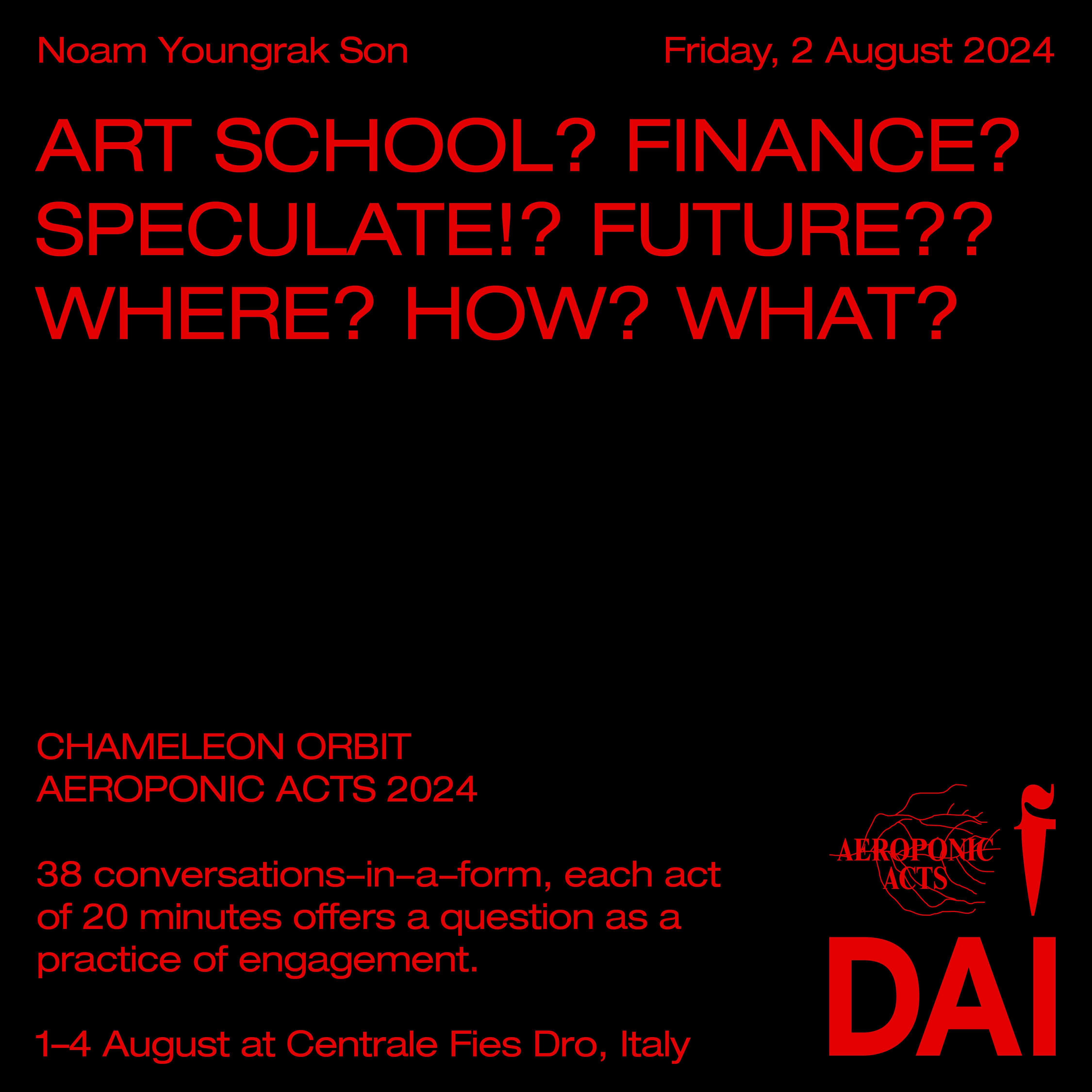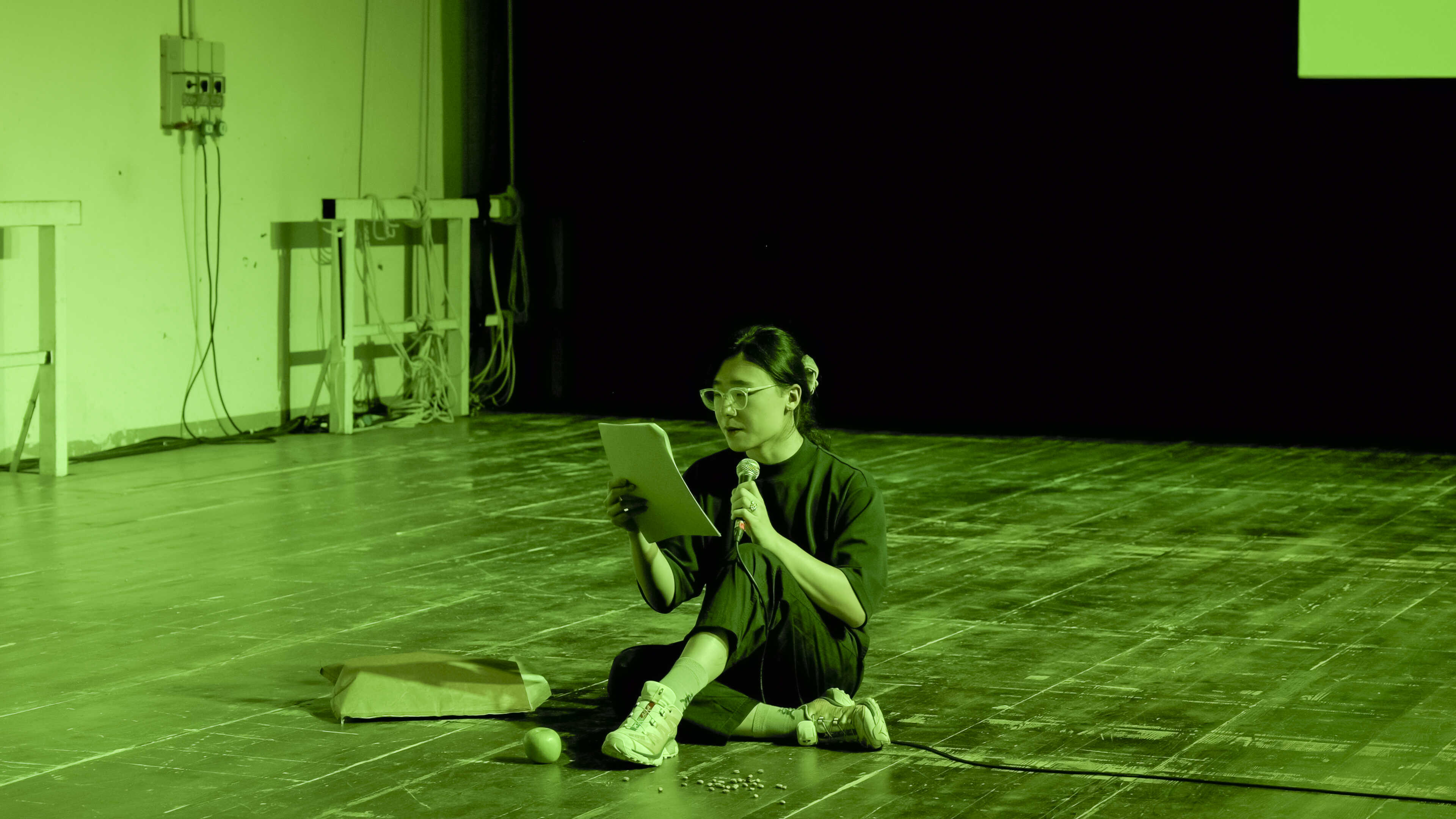Noam Youngrak Son ~ The School of Speculation
This work is not an institutional critique of any existing art school. Rather, it is part of ongoing research about how the impact of financialization on the idea of futurity is expressed and experienced in art and design education. The performance, in the form of a corporate presentation, proposes a speculative art school whose main mission is financial speculation. How can creativity be taught when financialization “fundamentally reorients our sense of possibility and futurity,” as Randy Martin argues? What does it mean to speculate when financial speculation dominates speculative fabulation?
AEROPONIC ACTS 2024 ~ Chameleon Orbit
About Noam Youngrak Son


